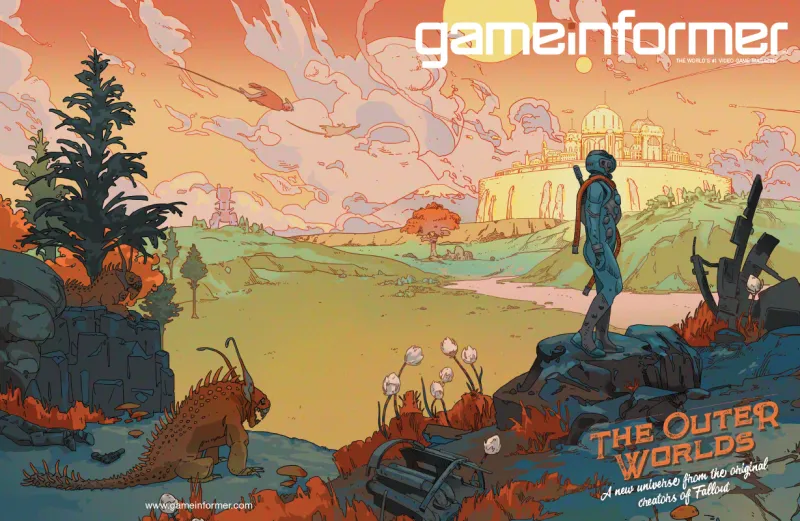

Our extra-large special edition is here. Subscribe today and receive the 25% longer issue at no extra cost!

The Outer Worlds has a unique visual style that merges classic sci-fi inspirations with the team’s own vision. As players pursue their space adventures, they are treated to a variety of people, places, and creatures that evoke pulpy serials, comic books, Westerns, and more. This look and feel is an integral part of the experience, and we talked to The Outer Worlds' art lead Daniel Alpert and co-director Leonard Boyarsky about the art team’s goals and process when creating the game’s stylish appearance.

Alpert: We really wanted to capture what it was like to be on a frontier planet. That’s what it is: Going out to the outer reaches of space, colonizing new lands, and when you get there, it’s all wilderness. Just like it would be back in the Wild West times. But we also wanted to not just invoke that frontier landscape, but also make sure we get some of that science-fiction vibe. That’s why we wanted to hit it with the cryosuit, which is a huge juxtaposition. You take out the cryosuit, you take out the fancy city, it just looks likes a frontier landscape. You add those elements in, it becomes otherworldly.
Alpert: These are some of my favorite pieces in the game. As you play through, you affect story events. You get these loading screens that are like newspaper-printed images of things the player has done. In a single playthrough, you can’t get all the newspaper images.
Boyarsky: We knew we wanted to do something where you were seeing images or propaganda based on what you had done, but it came together when we decided that it was told from the Board’s [the corporate ruling body in The Outer Worlds] point of view. These are from Board-operated newspapers and periodicals. If you’re doing stuff the Board approves of, you’re a hero. If you’re doing anti-Board stuff, it’s an “evil, mysterious stranger plotting against us” kind of thing.
Alpert: This [first image] is one of our outfits. It’s a tactical officer for the corporate military. It has a lot of heavy, industrial feeling. It’s got the pipes, the controllers. But when you step back, you can see a lot of influences that we pull from that robber-baron time. When you examine a lot of our armors, you’ll see those motifs go on and on.
Boyarsky: Without being too over-the-top obvious or too anachronistic, we really wanted these to feel like they were soldered out of big industrial metal pieces. We wanted the game to have a distinct look and be recognizable stylistically.
Alpert: Every corporation will have a very recognizable color scheme, and you can pick them out in a crowd. You see those same colors throughout the game. Like, you go into a Spacer’s Choice town, and you know it’s a Spacer’s Choice town. You go into an Auntie Cleo town, and you know it’s an Auntie Cleo town.
Alpert: We have these two planets – one is Terra, one is Monarch – and the people of Terra don’t like the people of Monarch. They’re making propaganda films to sell to the people why it’s bad there. We even have, in Byzantium, a film studio where they’re filming some of this stuff, alluding to the fact that they’re constantly churning out propaganda.
[Titus Andronicus] has some of the goriest Shakespearean stuff ever. There’s a lot of vile stuff in there; if people actually know the story and want to take a deeper dive into this image, they can figure out some of the things we put in there.
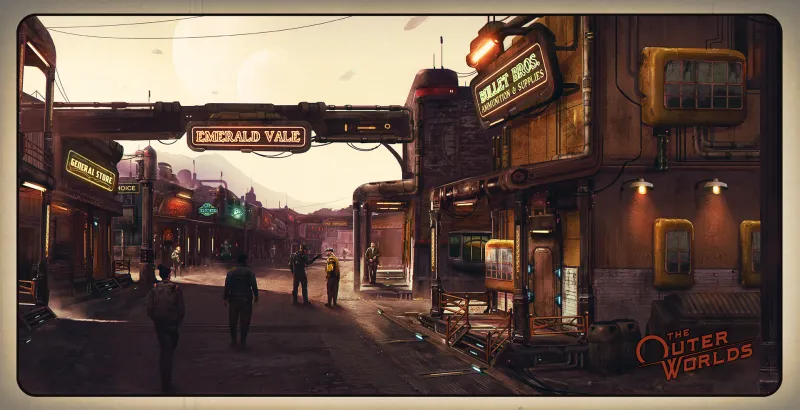
Boyarsky: Dieselpunk is very 1930s, and I was like “That’s unfortunate, because that almost feels like what we want.” I just threw out “Dieselpunk Deadwood,” and then we were like, “That’s what we have to somehow encapsulate.” … This is where we, as far as the environment goes, really hit where we wanted to go with the project.
Alpert: I think it was this piece that, once the team starting seeing it, it clicked for a lot of people.
For more on The Outer Worlds, click on the banner below for more exclusive features during our month of coverage.
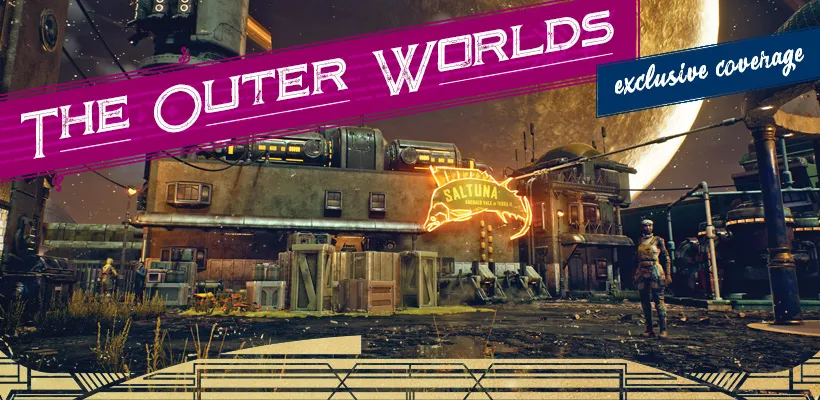
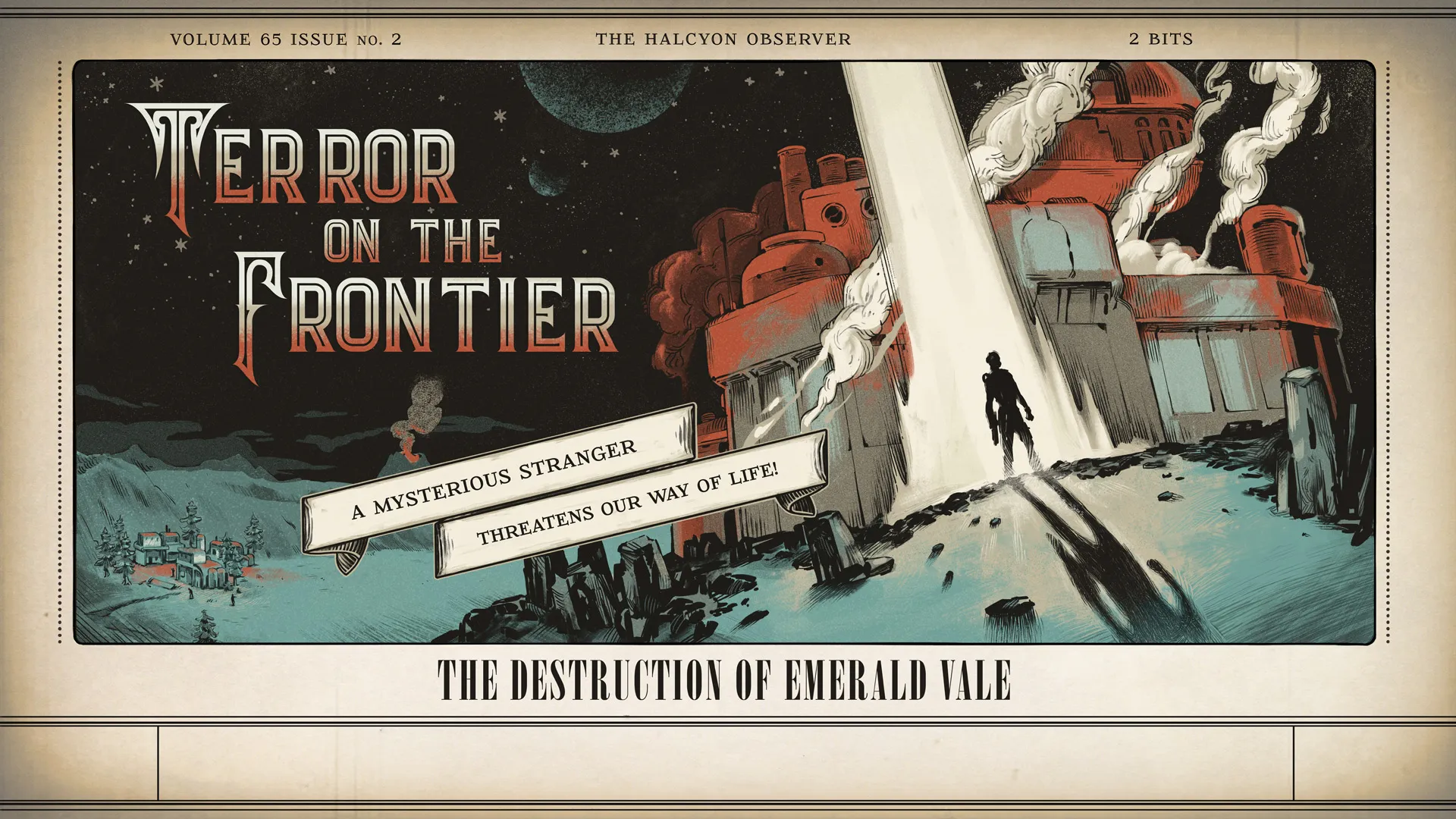
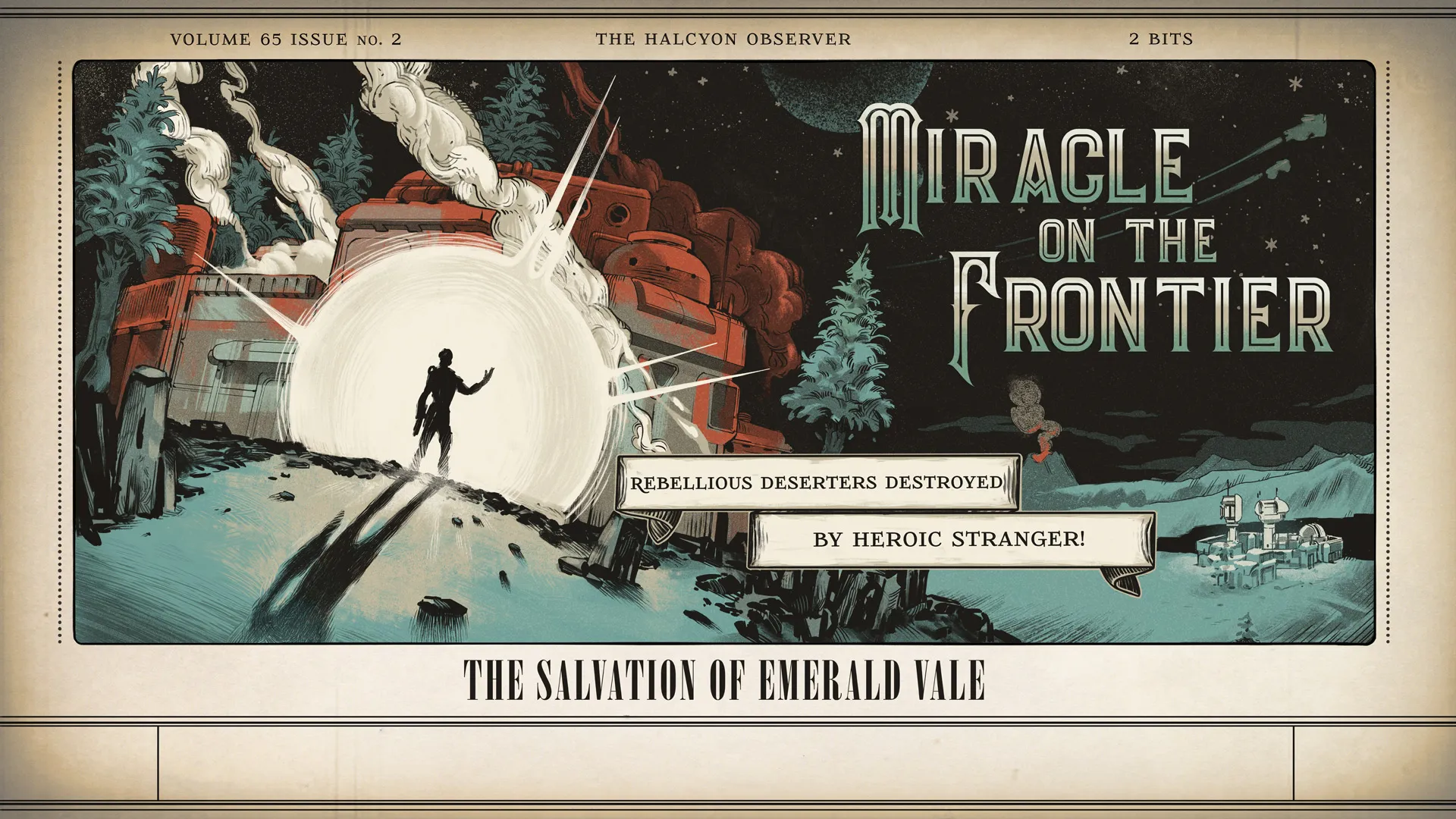
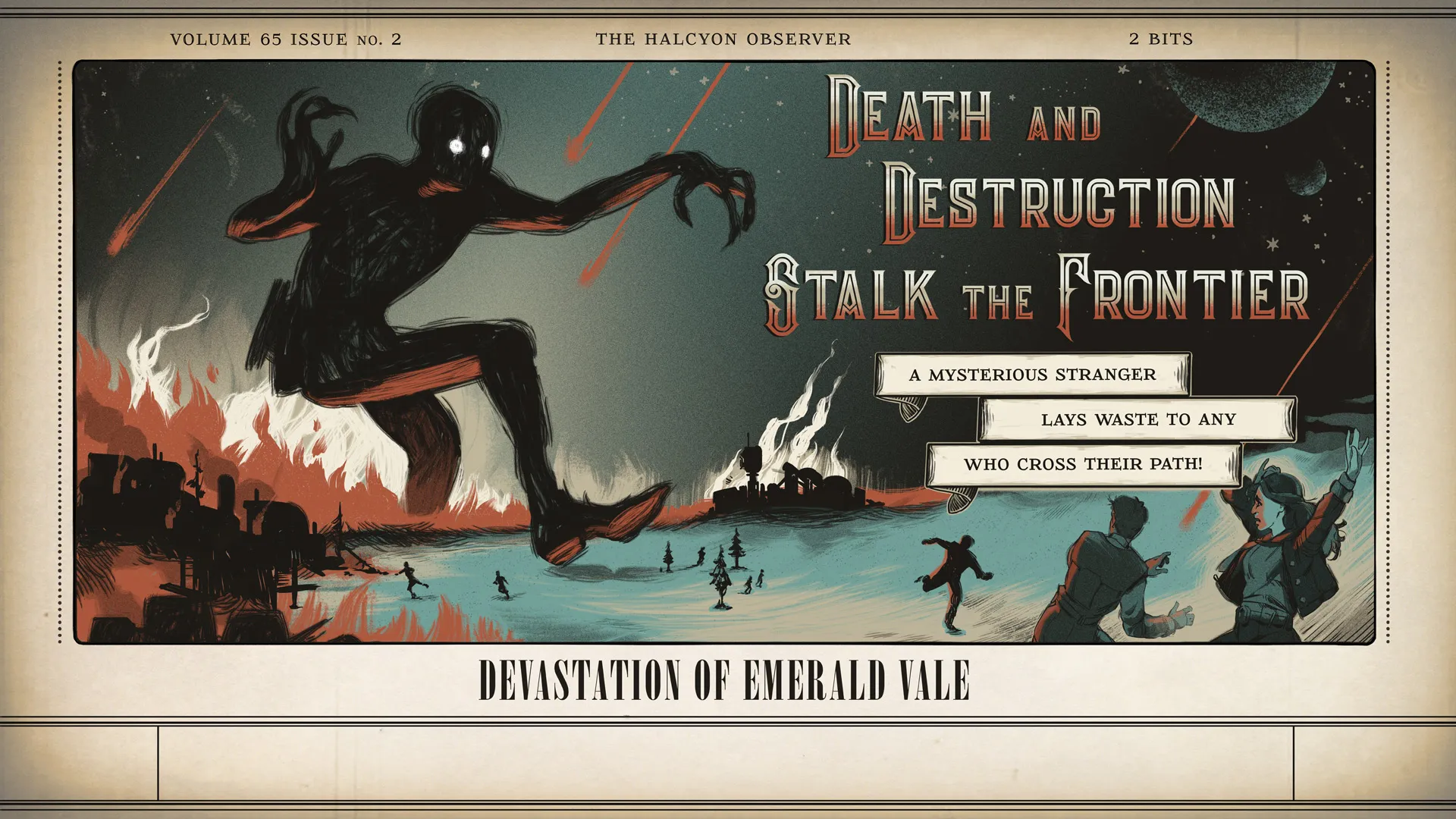
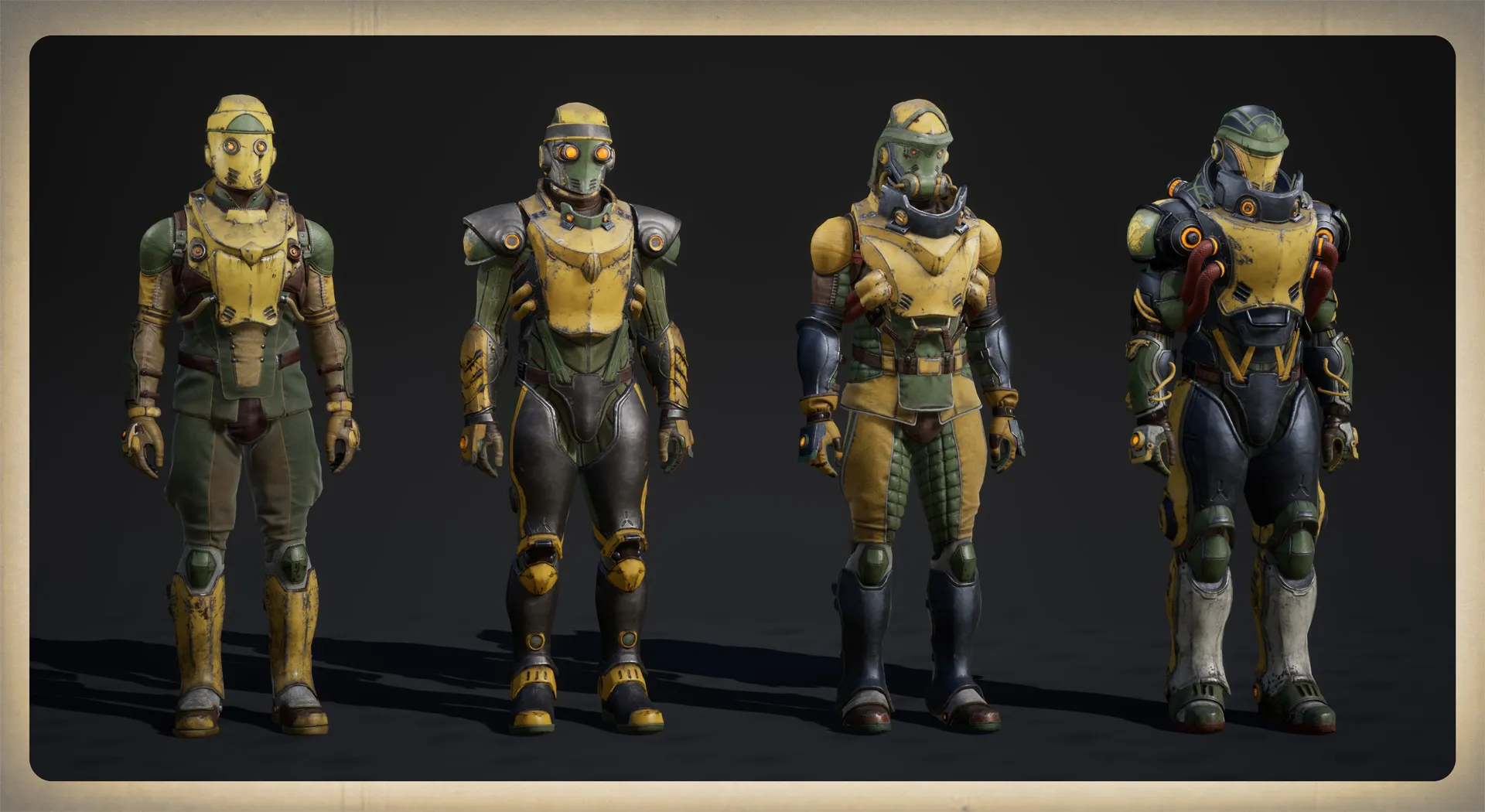
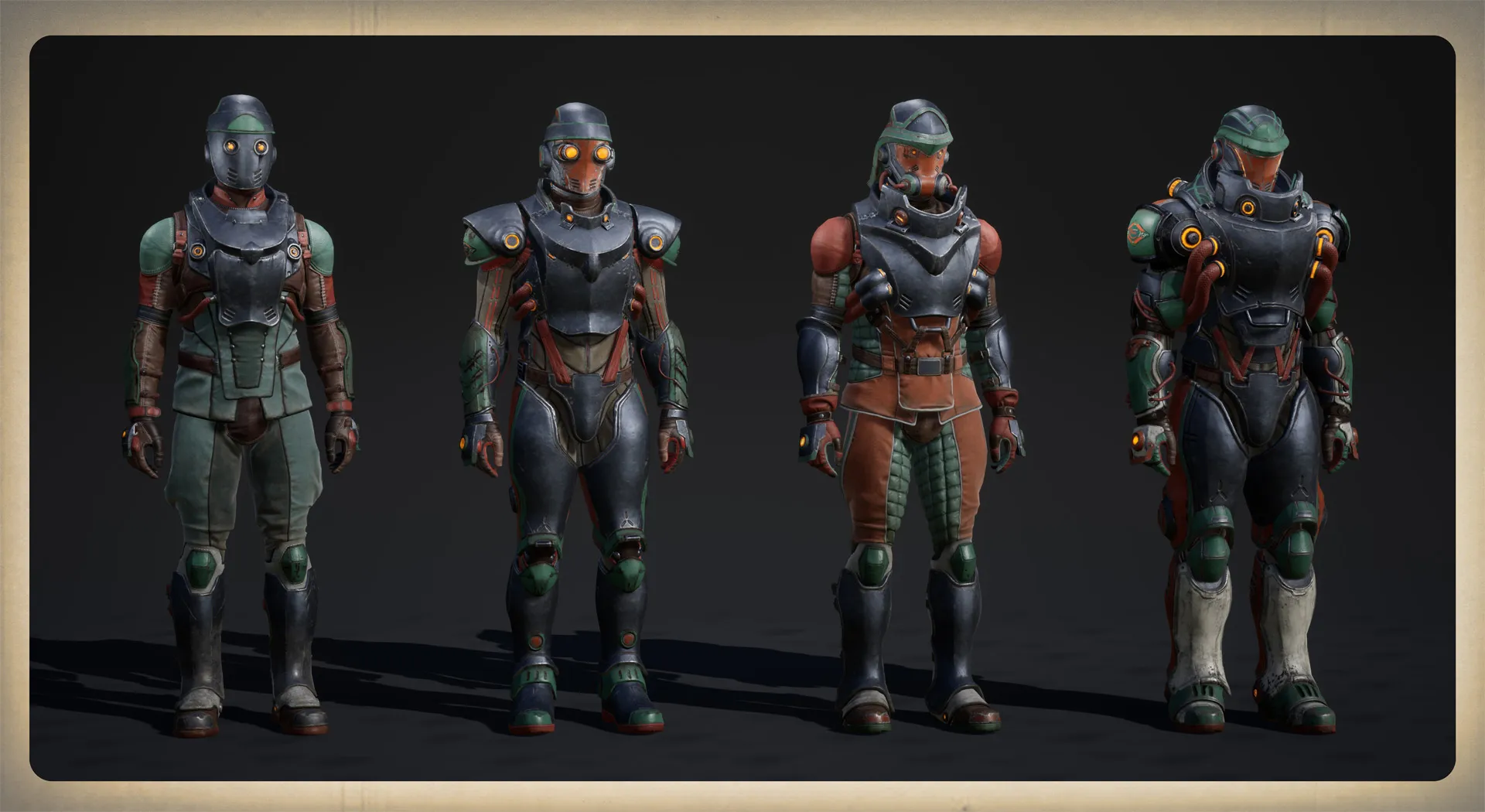
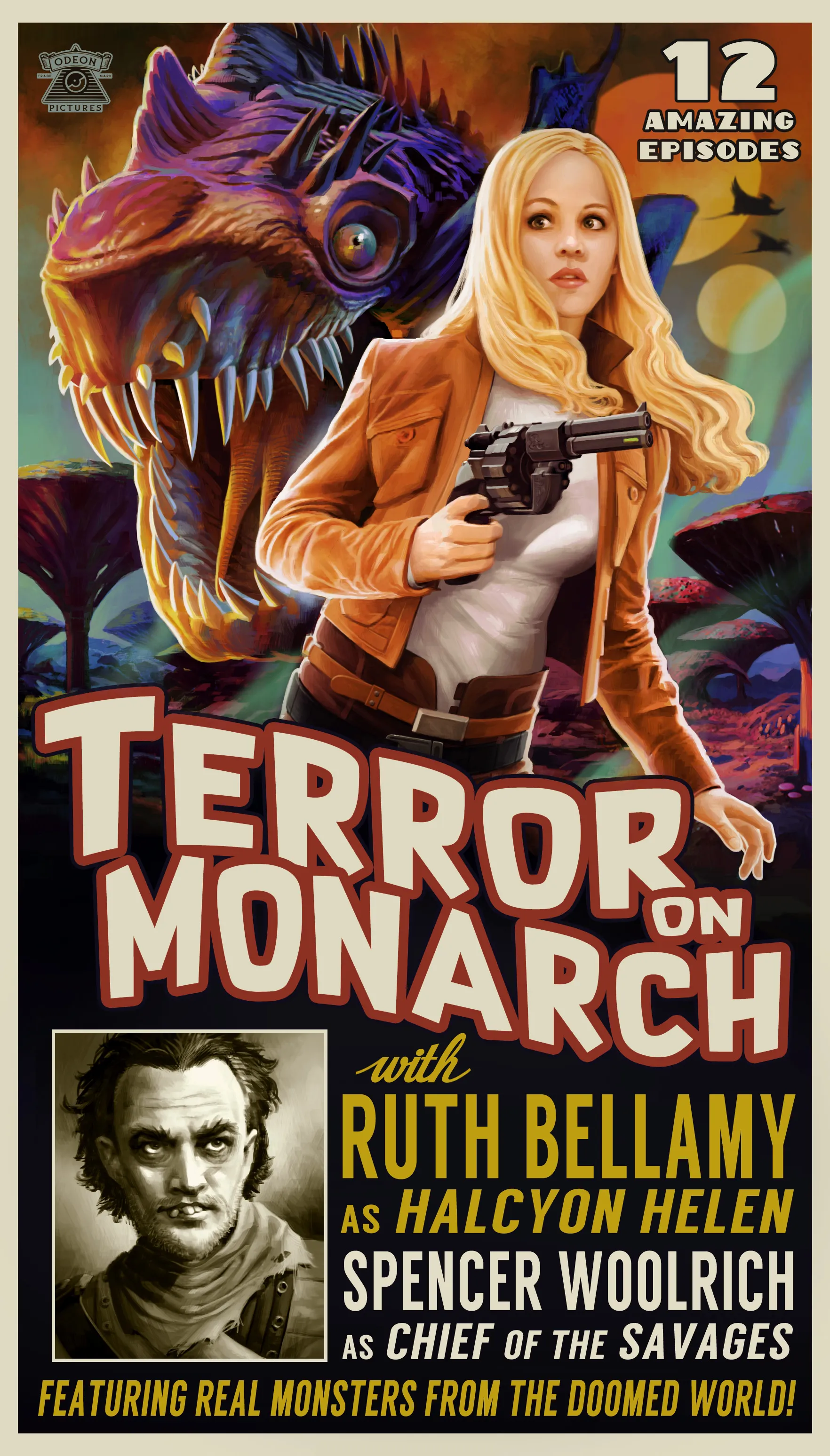
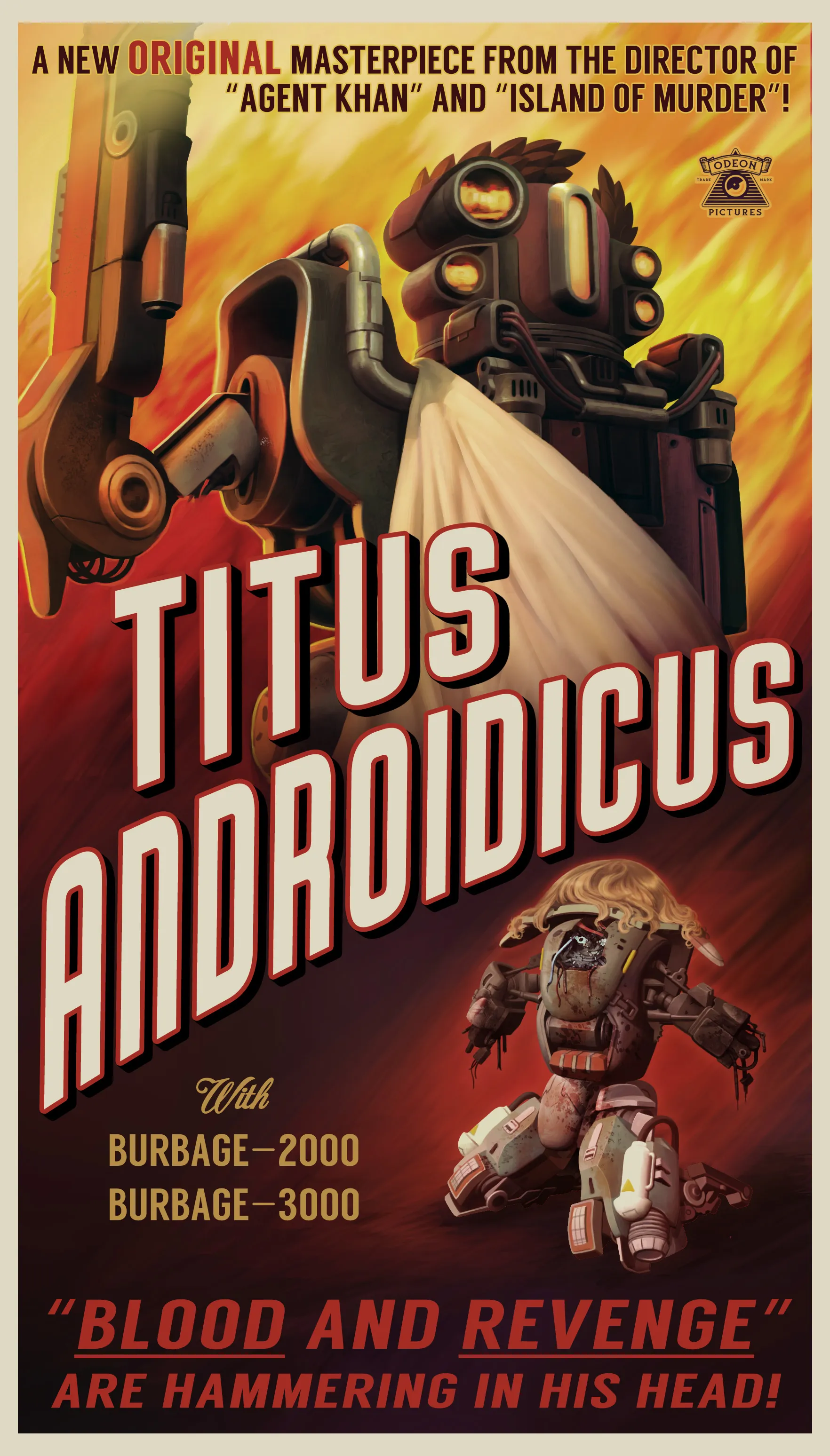

Explore your favorite games in premium print format, delivered to your door.